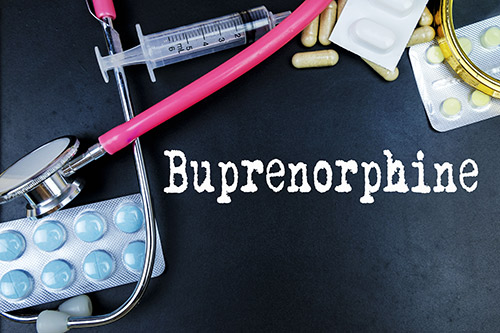What is Drug Rehab?
Drug rehabilitation is the process of undergoing a treatment that can involve a combination of therapies and medications that can help people recover from an addiction. Drug rehabs are there to help people re-enter society without the need for drugs or alcohol. It is a way to achieve sobriety and improve their lives.

Drug addiction is a devastating disease that can consume the life of anyone subjected to it and can dramatically affect all those who are close or associated with that person. No matter what substance you or your loved one are addicted to, whether it be meth, heroin, cocaine, or any number of other drugs, fighting addiction is never easy. Perhaps the reason why so many people struggle with addiction on a daily basis is because of the deep, physical, as well as mental changes in your brain caused by using mind-altering chemicals for extended periods of time that also affect the body and state of mind.
When taking a drug, major chemical changes are happening in your brain that alter the way that it functions, and over time, how it grows. Once addicted, the brain needs the chemical to function properly, meaning it actively craves it and goes into a type of shock when it doesn’t receive it. This is what keeps an addicted individual coming back to use the substance over and over, despite the obvious harm, depression and overall grief that repeated use will cause.
The path to substance abuse may start with the person voluntarily choosing to use the drug. Maybe it’s just once at first but over time, a pattern begins to form that alters and bends many of the primary structures of one’s life in order to make room for the alien chemical the addict uses to escape or numb themselves to the pressures of life.
Once addicted, it can be extremely hard to break the addiction. Because of the deep, physical and mental roots that drugs and alcohol grow into, making such a radical change from dependency to a sober life can often times be too much for a person to do on their own. When one realizes that their problem may be more than they can handle alone, they often turn to treatment programs that have been specially designed to handle the problem of substance abuse and help its patients take the appropriate steps toward recovery.
Why is Drug Rehab Essential?
Drug rehab is essential for people with substance use disorders because it not helps them overcome their addiction, but also decreases the probability of future relapses. In addition, for intravenous drug users, drug rehabs can be used as preventative measures to contracting infections that can be transmitted by shared needles and syringes, such as HIV or Hepatitis C. Many people dealing with substance use disorders turn to drug rehabs to help them reduce or eliminate withdrawal symptoms and cravings.
Does Drug Rehab Work?
Every drug treatment program varies in its methods of helping people dealing with a substance use disorder. Drug and alcohol rehabilitation programs are meant to assist persons struggling with a substance use disorder on their path toward recovery.
How do You Know You Need Rehab?
Lucky for many who suffer from substance addiction, there are treatment programs that can help you achieve recovery from drug abuse. Almost always, they have higher success rates for helping people achieve sobriety than when people try to do it on their own. They also are proven to help people maintain their sobriety more effectively over the long term. So, if you or someone you know is struggling with addiction, how to do you know it’s time to go to rehab?
What to Expect From Drug Rehab
When patients enter a drug rehabilitation clinic, they may first be asked to complete some paperwork related to the costs of the program. Some clinics are willing to work with state insurance programs, including Medicaid. Others offer to waive the costs of treatment under certain circumstances.
When that process finishes, the patient will see a doctor or a nurse for a proper evaluation. During that evaluation process, the medical professional will determine what type of treatment is needed and the estimated length of time the person needs to stay in the program.
While in a drug rehabilitation center, the length of a patient’s program is usually determined by how severe their addiction is. The duration of the drug rehab program is also influenced by whether they need to be treated with medicine, therapy or both. Most of the time, a medical professional will prescribe medication to treat the patient’s addiction and withdrawal symptoms. Some treatment centers offer medication-assisted treatment (MAT) to help patients with opioid use disorders.
MAT involves treating patients using replacement medications that are approved by the U.S. Food and Drug Administration. Physicians will often prescribe methadone, buprenorphine, or naltrexone to treat patients.
Some treatment centers utilize a variation of the 12-step program, created by Alcoholics Anonymous, which has been used as a model for many drug and alcohol treatment programs for many years.
Whichever drug rehab individuals choose, the focus will be on placing them into an environment that encourages healing and provides the support they need.

What to Look for in Drug Rehab
When looking for drug rehab, people must make sure the addiction treatment center fits their specific needs. Every drug rehabilitation center is different and there are certain things to look for when choosing the right program.
When you first start looking for a rehab clinic that you or a loved one will be checking into, it’s important to first understand exactly what the principles of an effective treatment consist of. Based on studies that have been performed since the 1970s, here are the key principles that should ideally form the basis for an effective treatment program.
Types of Drug Rehab
Currently, there are many addiction treatment options available for people to explore. Some range from drug detox, outpatient and inpatient services, MAT, and holistic recovery which can include counseling, physical, behavioral, and spiritual therapy alongside MAT. Any of these forms of addiction treatment may be combinable with additional support group services, including Alcoholics Anonymous, Narcotics Anonymous, Al-Anon, and Nar-Anon (for family members of persons with alcohol or substance use disorders).
What is important to remember is that while patients are going through the process of addiction recovery, they are not alone. Physicians, family members, and friends will have the chance to be there to direct and encourage the patients through different stages of the recovery.
There have been multiple efforts implemented by different states and by the federal government as well as the medical community to destigmatize the process of addiction treatment and make it easier for people in recovery to feel supported every step of the way.
When considering the type of rehab that might suit you best, it is important to know exactly what your options are. There are many different types of rehab and finding the one that caters to your personal needs and addiction is key to finding success. It is important for all of them to 1. Modify the attitudes of their patients to the use of drugs and alcohol, 2. Increase healthy lifestyle choices and skills, and 3. continue with other forms of treatment, such as medication. Here are a few of the most popular forms of treatment.
Drug Detoxification
Drug detoxification is considered to be the first step in most drug rehabilitation programs. While some drug detox programs are offered within hospitals, others are available at standalone clinics. Drug detox is often combined with other forms of therapy and treatment methods.
Drug detox is a method of intervention, often supervised by medical professionals, to cleanse a patient’s body of alcohol or drugs. During this time, drug detox will help manage a patient’s withdrawal symptoms. It is important to note that drug detox does not represent a long-term solution to drug abuse. In cases where a patient is admitted into a hospital for intoxication, drug detox serves as an initial form of pain management on the path toward abstinence.
Most drug detox intake processes are similarly structured to one another. When patients first arrive at a treatment center, they most likely will receive an evaluation, go through a stabilization process, and then be at a stage in which they can continue rehabilitation treatment as part of the recovery process.
First, clinicians will work with a patient during an initial intake evaluation. During this time, clinicians will examine them to determine what is the best form of treatment. They will give them blood tests to narrow down what substance or substances are currently in the body. In addition, clinicians will evaluate them to see if they have a co-occurring behavioral or physical disorder that may affect their substance use disorder or its subsequent treatment.
Second, the process of drug detox will be explained in-depth to the patients, to give them an idea of the exact type of treatment they will receive and how it might affect them. During this stage, a patient may or may not be prescribed medications to ease withdrawal symptoms. Family members may be brought in to show support or help prepare the patients for the recovery phase.
Third, the final phase prepares people to enter into a treatment program. While drug detox helps alleviate the physical aspects of drug addiction, additional treatment is necessary in order to address the behavioral and psychological aspects of the dependence. Follow-up treatment may also help prevent relapses into drug use. Although there are different treatment approaches depending on the particular substance involved, most likely some form of medication will be used to treat their substance use disorders.
Outpatient Rehab
Outpatient rehab consists of different forms of behavioral therapy, sometimes combined with prescribed medication to help people with withdrawal or pain symptoms. When a patient attends an outpatient clinic, they’ll initially be assessed by a medical professional who will then determine the most appropriate treatment option.
Outpatient behavioral treatment includes a multitude of programs for people who wish to visit a behavioral health counselor on a regular basis throughout treatment. These treatments can consist of both individual or group counseling and typically offers types of behavioral therapy.
If recommended outpatient rehabilitation, patients will be required to check in regularly with their designated clinician or clinic. During these appointments, they may have to regularly submit drug tests, receive prescription medications, and participate in additional counseling or therapy services, such as cognitive-behavioral therapy, family therapy, and contingency management. If other services seem cost-prohibitive or do not work around a person’s busy schedule, outpatient rehabilitation may be the most viable option available. Some physicians may recommend intensive outpatient treatment—which requires more sessions and provides resources, including psychoeducational courses, and additional continuing care, such as support groups.
Inpatient Rehab
Inpatient rehab is generally a longer process that involves a patient being admitted into a hospital or residential clinic. The type of stay depends on the kind of treatment being administered. A patient who needs inpatient rehabilitation generally has a more severe form of substance use disorder. While in inpatient rehab, clinicians supervise a patient’s substance use disorder treatment.
This is often considered to be one of the most effective means of treatment, especially for people whose problems have grown more severe. Facilities that have been both licensed and accredited that offer 24-hour structured and intensive care often have incredible success rates. These treatment facilities often use a variety of therapeutic approaches which are largely meant to help the patient live a drug-free, crime-free lifestyle after treatment. Some examples of inpatient and residential treatment.
Many inpatient drug treatment centers have a variable length of stay depending on the type and severity of addiction a patient has. A majority of inpatient addiction treatment centers will allow a patient to stay between 30 and 90 days, depending on their needs. In special cases, some drug addiction treatment centers will allow a patient to stay longer than 90 days, potentially up to a year.
The 12-step Program
Hailed as the overall standard for drug addiction programs for almost every kind of addiction, the Alcoholics Anonymous 12-step model is one of the oldest and most utilized forms of treatment around.
Here are the 12-steps that are most commonly used in treatment:
- Admit that you are powerless over your addiction and that your life has become unmanageable.
- Realize that there is a power greater than yourself that can restore you to sanity.
- Make the decision to hand your will and your life over to the care of God.
- Make a searching and fearless moral inventory that you will live by and stand by.
- Admit to ourselves and another person all of the wrong things that we have done in the past.
- Be ready to have God remove all of your character defects.
- Ask God to remove our imperfections and shortcomings.
- Make a list of everybody you have wronged and become willing to make amends with all of them.
- Make amends with them in every way possible, except when doing so would harm or injure someone.
- Continue to keep a personal inventory and admit when you are wrong.
- Improve through prayer and meditation your conscious contact with God. Pray for only knowledge and the power to carry it out.
- Once you have a spiritual awakening as a result of these steps, try to carry this message to others and practice the principles in all of your affairs.
How Many People Get Treatment for Drug Addiction?
According to studies done by SAMHSA’s National Survey on Drug Use and Health, over 22.5 million people aged 12 or older are substance abusers who needed treatment in 2014, but only 4.2 million of those people actively enrolled in some form of treatment during that same year. Even less enrolled in a specialty program conducted by professionals. With numbers like these, it shows us just how rampant the issue of addiction is in the U.S. and just how uncomfortable people feel with reaching out for help.
Medication-Assisted Treatment
MAT is a route to specifically treat opioid use disorders with medications that specifically address how the addictive qualities of opioid-based drugs affect a patient’s body and brain chemistry. Many government officials and medical professionals believe that MAT is the most effective treatment form for opioid use disorders, especially when combined with other forms of therapy, such as cognitive-behavioral therapy.
To treat the effects of opioid use disorders, medications such as buprenorphine, naltrexone, and methadone are most commonly used.
How Exactly is Medication Used During Drug Addiction Treatment?
While in treatment for any form of drug addiction, no matter the substance or how severe it might be, medication can always help to ease some of the difficult aspects of coming clean. Typically, they are used to manage the intensity of withdrawal symptoms, help prevent the chance of relapse by reducing cravings, and treating co-occurring conditions such as mental illness.

Buprenorphine
Buprenorphine is one of the most popular medications to use to treat opioid use disorders.
Buprenorphine acts to suppress the urges associated with an opioid addiction to lower cravings and potential chances of relapse. It lowers dependence on opioids and dampens the high a patient feels. It also places a ceiling on the withdrawal effects of opioids and how they affect a patient. It also finds a way to block other opioids and their effects.
Naltrexone
Naltrexone treats alcohol dependence, reduces the effects of opioids and prevents a relapse. It needs to be an isolated medication and cannot be combined with other drugs or pain medication.
Naltrexone works to block the effects that drugs have on the body. While buprenorphine activates the brain receptors, naltrexone does the reverse, completely blocking the receptors in the brain.
Methadone
Methadone alters the way a patient’s brain and nervous system react to pain by manipulating the brain into believing it is still receiving the drug that fuels the person’s addiction. Additionally, it relieves withdrawal symptoms from opioids.
Compared to other medications to reverse opioid dependence, methadone works at a slower pace. Methadone has generated some controversy since it is a synthetic opioid-based medication with highly addictive qualities. It can potentially be misused if not monitored carefully.
Holistic Recovery
A holistic recovery is an alternative form of treatment that does not employ traditional medications. Holistic recovery can include numerous forms of treatment including acupuncture or acupressure, massages, yoga, meditation, herbal medicines, reiki, and other forms of energy work and nutritional therapy.
Holistic recovery focuses on the factors that led to addiction. It usually centers on the physical symptoms of drug addiction and the withdrawal associated with it. Holistic recovery also targets the emotional instability that can lead to a substance use disorder. Holistic recovery deals with factors that lead to substance abuse addiction and some of these aspects include unhealthy eating habits.
Holistic therapists should be highly qualified and be able to promote behavioral changes among their patients. Many holistic recovery programs approach treatment from a whole-body perspective. The best holistic recovery programs will follow up with the patients after the treatment is complete to ensure that they stay on course in their recovery. They usually apply for plans and programs after the fact that they have learned from holistic healing and behavioral therapy.
Cognitive Behavioral Therapy
Cognitive Behavioral Therapy (CBT) is an element of psychotherapy centered on helping patients understand how a person’s learned behaviors, beliefs, and thoughts influence current problems. CBT, unlike psychoanalysis, focuses primarily on current issues rather than a patient’s past. Psychotherapists utilize a problem-solving approach with clients in order to present possible solutions, while also introducing stress relief approaches and other therapeutic suggestions. The main function of this type of therapy in helping persons with substance use disorders is helping them understand that their particular addictions are based on their thoughts or beliefs.
Motivational Enhancement Therapy
Motivational Enhancement Therapy (MET) is a form of therapy that uses motivational tactics to help people overcome their addictions. The first steps usually involve an initial battery assessment of the person and is followed up by several therapeutic sessions.
MET focuses on creating a plan to change a person’s life. Strategies for coping are usually addressed with the patient. In many instances, patients will be encouraged to invite their significant others to participate in sessions.
Systematic Desensitization
Systematic desensitization focuses on treating phobias associated with addiction. Sometimes, people will undergo practices such as breathing techniques and relaxation exercises. Most patients will be asked to rank their top fears and then their therapist will work with them to conquer each fear one at a time. After fear is conquered, the therapist will expose their patient to their subsequent fear in small doses until they reach to address their greatest fear.
Aversion Therapy
Aversion therapy is another form of treatment that is used for drug abuse and alcohol. The way it works is that it teaches people to turn something that would originally be desirable to them into something that represents an unhealthy stimulus. This, in turn, associates the unhealthy stimulant with something that is also uncomfortable and unpleasant.
Electronic Therapy
Some facilities have begun using certain forms of electronic therapy. Drug addiction treatment centers employ the NSS-2 Bridge, which is an electronic nerve field stimulator. What this device is meant to do is to limit opioid and heroin withdrawals. This device has been applied in a few treatment centers in the country and is still awaiting approval to be added to more facilities.
Drug Rehab Costs
Drug rehab costs can vary depending on which addiction treatment center is chosen. Many treatment centers allow Medicaid or Medicare to cover treatment costs. Other addiction treatment centers allow state or federal funding to help pay for the costs of each treatment. Private insurance also is used to pay for costs of rehabilitation as well as military insurance.
Conclusion
Finding the right treatment center for an addiction does not have to be a challenge. It is often a matter of what will work best for each person. The most important thing to consider when selecting a treatment center is which facility will match each person’s needs the most. Seeking treatment is one of the most important decisions a person struggling with substance use disorder will make in their lives and the one that will determine where they go in the future. Whichever addiction treatment center a person chooses should be the one that sets them on the healthiest path for the rest of their lives.


